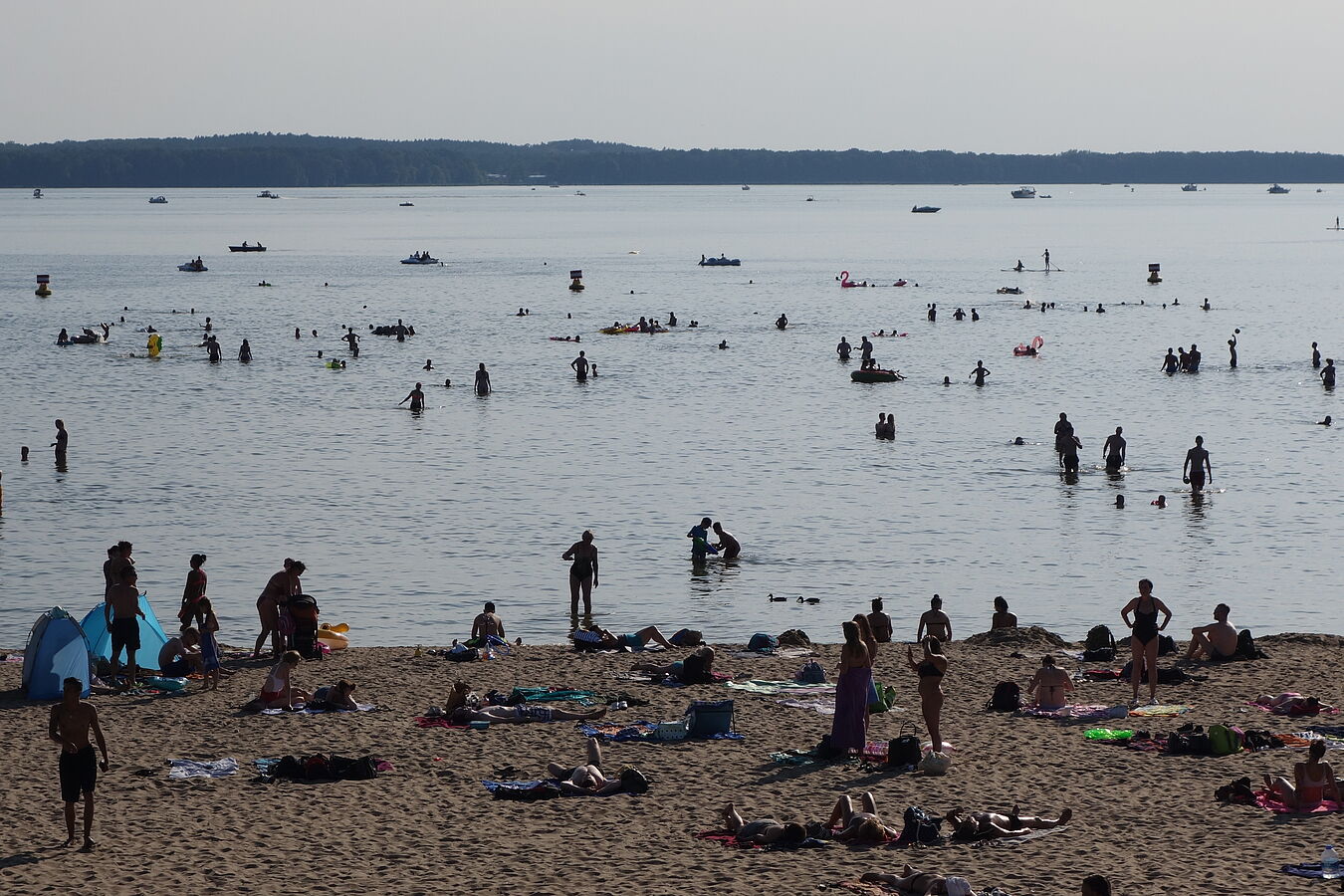Less is more: reduced nitrogen has greater potential than originally thought
For decades, experts have debated whether reducing the amount of nitrogen flowing into lakes can improve water quality in the long-term, even though blue-green algae can bind nitrogen from the air. However, no lakes with decreased nitrogen inputs have been monitored for long enough to clarify this – until now: scientists from the Leibniz-Institute of Freshwater Ecology and Inland Fisheries (IGB) have analysed long-term data to prove that decreasing nitrogen in Berlin’s Lake Müggelsee is the key to reducing algal blooms in summer. They showed that the amount of atmospheric nitrogen bound by blue-green algae is far too small to be used as an argument against the ecologically necessary reduction of nitrogen inputs.
In the 1970s, scientists discovered that nutrient inputs – mainly phosphorus and nitrogen – from agriculture and wastewater discharge were the main cause of excessive plant and algal growth in lakes and rivers. Since then, water management experts have concentrated on reducing phosphorus inputs. “Although this strategy often works, it is by no means always successful. In shallow lakes, the sediment releases large quantities of phosphorus in summer. In these cases, reducing nitrogen input may help to control algal blooms because algae need both phosphorus and nitrogen to grow. Until now, however, there has been no convincing evidence that decreasing nitrogen inputs, which is more complex and costly than decreasing phosphorus, works in the long term,” stated IGB freshwater ecologist Dr. Tom Shatwell, explaining the starting point of the study.
Long-term data provide deep insight
To conduct their investigation, the scientists statistically analysed 38 years of data (1979-2016). Since the 1970s, Lake Müggelsee (in Berlin, Germany) and its tributaries have been sampled on a weekly basis as part of a long-term programme to investigate phosphorus and nitrogen concentrations as well as the species composition in algal communities. Müggelsee is one of the few lakes in the world that have experienced a significant decrease in phosphorus and nitrogen pollution and that have been monitored for a sufficiently long time to draw conclusions on the effects of reducing nitrogen inputs.
Every summer, there was an excess of phosphorus in the water of Lake Müggelsee. The scientists concluded it was the decrease in nitrogen that caused algae blooms to decrease – and water clarity to increase. Contrary to common views, blue-green algae species did not replace the nitrogen missing from the tributaries with nitrogen from the atmosphere in the long term. In fact, blue-green algae did not increase in abundance and there was very little binding of atmospheric nitrogen. “It takes much more energy to fix atmospheric nitrogen than it does to use nitrogen compounds present in the water. Blue-green algae obviously only use this method when absolutely necessary and when there is sufficient solar energy,” explained Dr. Jan Köhler, co-author and leader of the “Photosynthesis and Growth of Phytoplankton and Macrophytes” research group at IGB.
Learning from Lake Müggelsee
Lake Müggelsee is the only large-scale case study of its kind to date. However, the extensive release of phosphorus from the sediment into the water and of nitrogen from the water into the air is typical for shallow lakes in summer, meaning that many other shallow lakes may behave similarly. “In any case, the results should be a sufficient incentive to test the targeted reduction of nitrogen for other lakes, too. Our study is a significant step towards achieving more effective water management,” stated Tom Shatwell, summarising the relevance of the results.
Read the study published in the journal Limnology and Oceanography:
Tom Shatwell, Jan Köhler (2018) Decreased nitrogen loading controls summer cyanobacterial blooms without promoting nitrogen-fixing taxa: long-term response of a shallow lake. Limnology and Oceanography. doi: 10.1002/lno.11002
Contacts:
| Dr. Tom Shatwell Leibniz-Institute of Freshwater Ecology and Inland Fisheries (IGB), Department 1 “Ecohydrology”, +49 (0)30 64181 690, shatwelligb-berlin.de (Interviews in English and German) Dr. Jan Köhler Leibniz-Institute of Freshwater Ecology and Inland Fisheries (IGB), Department 2 “Ecosystem Research” +49 (0)30 64181 687, koehlerigb-berlin.de (Interviews in German and English) Nadja Neumann Leibniz-Institute of Freshwater Ecology and Inland Fisheries (IGB), Public Relations +49 (0)30 641 81 975, +49 (0)175 2230224, prigb-berlin.de |


